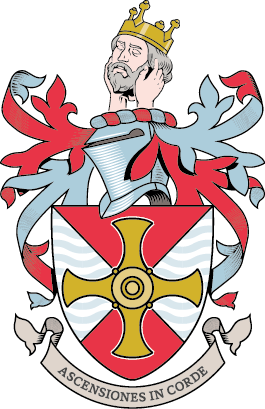
TE-WHĀITI-NUI-Ā-TOI SCHOLARSHIP - BACK TO THE BEGINNING
The Te-Whāiti-Nui-Ā-Toi Scholarship is such an integral part of Lindisfarne today that it is hard to imagine the College without this important institution. Jim Pine had a similar reaction when he started as Rector of the College in 1971 and noted the absence of Māori students. In his speech to open the Te-Whāiti-Nui-Ā-Toi 40 year reunion in 2012, he recalls, “It seemed strange, unnatural, that on the East coast of the North Island, here was a boys’ College, Forms 1-7 with a newly opened chapel/assembly hall and acres of orchards but with no Māori pupils!” This was something that Jim and supporters from the Presbyterian Church and Māori Synod set out to address.
By the 1930’s a close association had developed between the Presbyterian Church and the Tuhoe people with some of the first schools set up in the region by Presbyterian missionaries. This developed into the desire for a “farmschool” for Māori boys which, after a few abortive attempts was established at Te Whāiti in 1937 with only two students. Over the years, numbers increased but rising costs lead to the closure of the
school in 1968 . The farm still remained productive, however, and the Māori Synod decided that profits from the farm would be put towards funding the education of a number of boys at a suitable Presbyterian school.
The Māori Synod approached Lindisfarne College in 1971 as the only Presbyterian boarding school on the East coast and it was agreed that the College would take up to three Māori boys each year. The main participants in the discussions were Mr. Rodney Gallen (not yet Sir Rodney Gallen), Tuhoe elders and representatives of the Māori Synod: Mr. John Rangihau, (who is depicted in the Lindisfarne Good Man window) and Mr. Joe Te Maipi, Rector Jim Pine and Presbyterian Ministers: Duncan Jamieson and Bill Lindsay. Jim Pine recorded the agreement in his report at the annual prize-giving on 6th December 1971: “Much more important, the Presbyterian Māori Synod and our own Council have combined to arrange, select and bring to the College, two Māori boys as third formers, the first of a small group that we will have here. I welcome this decision warmly, sure that this is a natural and Christian thing for us to be doing,
and certain that it is we who stand to gain most from becoming a truly New Zealand school.”
Jim Pine recalls how it all developed, ”Onto the scene came wonderful new Synod friends like Mac Temara, Tommy Taka, Charlie Maitai, Tom Hawea, and John Rangihau, all led by Rodney Gallen. Rodney drove us to meetings of the Synod and to visit the homes of the candidates. Once selected, the boys and families were brought to visit the College, meet the staff, wives and matrons, see the dormitories and be fitted with uniforms for the following year.” in 1982, the farm property at Te-Whāiti was sold, with the proceeds placed in a trust to ensure the ongoing award of scholarships for educational purposes.
This scholarship were to have an enormous impact on the boys selected, on the College and on everyone
involved, including the Pines. Jim Pine recalls , “It was for us, an introduction to a different culture with a wider sharing and caring and with a great sense of fun. All this was, I am sure, why Norma and I went next, to a similar society at a school in the Solomon Islands.”
The Te-Whāiti-Nui-Ā-Toi Scholarship has gone on to become an essential part of Lindisfarne College and has produced a series of outstanding leaders in an extraordinary range of activities. Two of the ex-students chosen for our seven notable Old Boys, Sir Joe Williams and Israel Dagg are proud Te-Whāiti recipients and represent the ongoing success of the scholarship. Those visionary men who conceived the Te-Whāiti scholarship back in 1972 must be very proud to see the products of their vision.
Article added: Wednesday 20 September 2023


